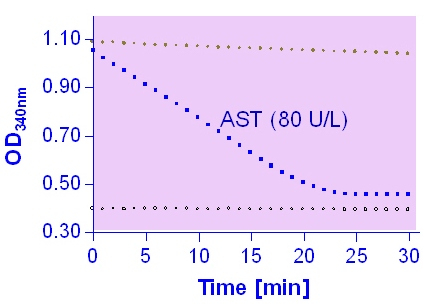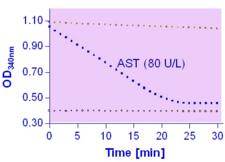Login
Registration enables users to use special features of this website, such as past
order histories, retained contact details for faster checkout, review submissions, and special promotions.
order histories, retained contact details for faster checkout, review submissions, and special promotions.
Forgot password?
Registration enables users to use special features of this website, such as past
order histories, retained contact details for faster checkout, review submissions, and special promotions.
order histories, retained contact details for faster checkout, review submissions, and special promotions.
Quick Order
Products
Antibodies
ELISA and Assay Kits
Research Areas
Infectious Disease
Resources
Purchasing
Reference Material
Contact Us
Location
Corporate Headquarters
Vector Laboratories, Inc.
6737 Mowry Ave
Newark, CA 94560
United States
Telephone Numbers
Customer Service: (800) 227-6666 / (650) 697-3600
Contact Us
Additional Contact Details
Login
Registration enables users to use special features of this website, such as past
order histories, retained contact details for faster checkout, review submissions, and special promotions.
order histories, retained contact details for faster checkout, review submissions, and special promotions.
Forgot password?
Registration enables users to use special features of this website, such as past
order histories, retained contact details for faster checkout, review submissions, and special promotions.
order histories, retained contact details for faster checkout, review submissions, and special promotions.
Quick Order
| Catalog Number | Size | Price |
|---|---|---|
| LS-K297-100 | 100 Tests | $495 |

Aspartate Transaminase (AST) Assay Kit (Colorimetric) - LS-K297
Aspartate Transaminase (AST) Assay Kit (Colorimetric) - LS-K297
Available for shipment within the USA only
Description:
Aspartate Transaminase (AST), also known as serum glutamic oxaloacetic transaminase (GOT) or aspartate aminotransferase (ASAT/AAT), facilitates the conversion of aspartate and a-ketoglutarate to oxaloacetate and glutamate. There are two isoenzymes in humans: GOT1 is a cytosolic isoenzyme derived from red blood cells and heart; GOT2 is the mitochondrial isoenzyme found mainly in the liver. AST is elevated in liver and muscle diseases. It is part of diagnostic tests for liver function, myocardial infarction, acute pancreatitis, acute hemolytic anemia, severe burns, acute renal disease and trauma. Simple, direct and automation-ready procedures for measuring AST activity find wide applications in research and drug discovery. This AST activity assay is based on the quantification of oxaloacetate produced by AST. In this assay, oxaloacetate and NADH are converted to malate and NAD by the enzyme malate dehydrogenase. The decrease in NADH absorbance at 340 nm is proportionate to AST activity.
Available for USA Shipment Only
Toll Free North America
 (800) 227-6666
(800) 227-6666
For Research Use Only
Overview
Description:
Aspartate Transaminase (AST), also known as serum glutamic oxaloacetic transaminase (GOT) or aspartate aminotransferase (ASAT/AAT), facilitates the conversion of aspartate and a-ketoglutarate to oxaloacetate and glutamate. There are two isoenzymes in humans: GOT1 is a cytosolic isoenzyme derived from red blood cells and heart; GOT2 is the mitochondrial isoenzyme found mainly in the liver. AST is elevated in liver and muscle diseases. It is part of diagnostic tests for liver function, myocardial infarction, acute pancreatitis, acute hemolytic anemia, severe burns, acute renal disease and trauma. Simple, direct and automation-ready procedures for measuring AST activity find wide applications in research and drug discovery. This AST activity assay is based on the quantification of oxaloacetate produced by AST. In this assay, oxaloacetate and NADH are converted to malate and NAD by the enzyme malate dehydrogenase. The decrease in NADH absorbance at 340 nm is proportionate to AST activity.
Specifications
Name
Aspartate Transaminase (AST) Assay Kit (Colorimetric)
Type
Detection/Quantition
Usage
For quantitative determination of aspartate transaminase (AST) activity and evaluation of drug effects on AST activity.
Target
Aspartate Transaminase
SampleType
Plasma, Serum
Detection
Colorimetric (340 nm Absorbance)
Supplied Components
The following components are supplied with this product.
- Assay Buffer
- Cofactor
- Enzyme Mix
- NADH Reagent: Dried
- (See Datasheet for specific volumes supplied)
Applications
Spectrophotometry (visible)
Equipment
Microplate spectrophotometer (visible), Spectrophotometer (visible)
Conditions
Shipped +4°C Ice Packs, Store at -20°C, 6 months shelf life.
Documents
Restrictions
For research use only. Intended for use by laboratory professionals.
Available for shipment within the USA only
Guarantee
This Assay Kit carries the LSBio 100% Guarantee
Publications (0)
Customer Reviews (0)
Images
Colorimetry

Colorimetry

Colorimetry

Colorimetry

Request SDS/MSDS
To request an SDS/MSDS form for this product, please contact our Technical Support department at:
Technical.Support@LSBio.com
Requested From: United States
Date Requested: 4/14/2025
Date Requested: 4/14/2025










